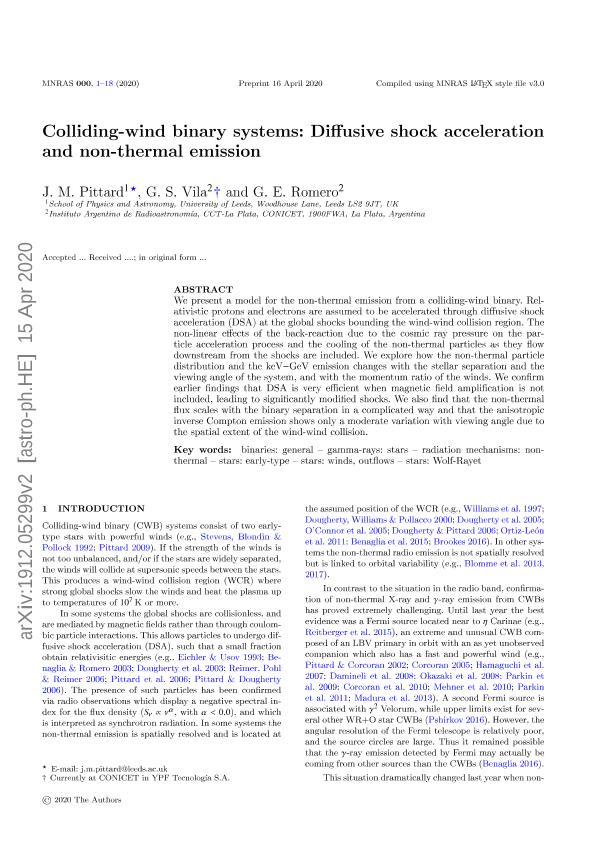Artículo
Colliding-wind binary systems: diffusive shock acceleration and non-thermal emission
Fecha de publicación:
06/2020
Editorial:
Wiley Blackwell Publishing, Inc
Revista:
Monthly Notices of the Royal Astronomical Society
ISSN:
0035-8711
Idioma:
Inglés
Tipo de recurso:
Artículo publicado
Clasificación temática:
Resumen
We present a model for the non-thermal emission from a colliding-wind binary. Relativistic protons and electrons are assumed to be accelerated through diffusive shock acceleration (DSA) at the global shocks bounding the wind?wind collision region. The non-linear effects of the backreaction due to the cosmic ray pressure on the particle acceleration process and the cooling of the non-thermal particles as they flow downstream from the shocks are included. We explore how the non-thermal particle distribution and the keV−GeV emission changes with the stellar separation and the viewing angle of the system, and with the momentum ratio of the winds. We confirm earlier findings that DSA is very efficient when magnetic field amplification is not included, leading to significantly modified shocks. We also find that the non-thermal flux scales with the binary separation in a complicated way and that the anisotropic inverse Compton emission shows only a moderate variation with viewing angle due to the spatial extent of the wind?wind collision.
Archivos asociados
Licencia
Identificadores
Colecciones
Articulos(IAR)
Articulos de INST.ARG.DE RADIOASTRONOMIA (I)
Articulos de INST.ARG.DE RADIOASTRONOMIA (I)
Citación
Pittard, J. M.; Vila, Gabriela Soledad; Romero, Gustavo Esteban; Colliding-wind binary systems: diffusive shock acceleration and non-thermal emission; Wiley Blackwell Publishing, Inc; Monthly Notices of the Royal Astronomical Society; 495; 2; 6-2020; 2205-2221
Compartir
Altmétricas




